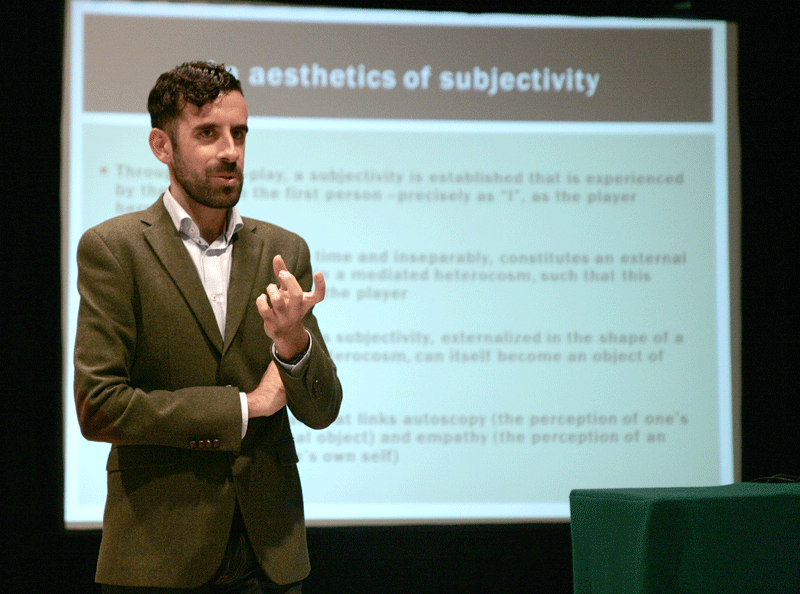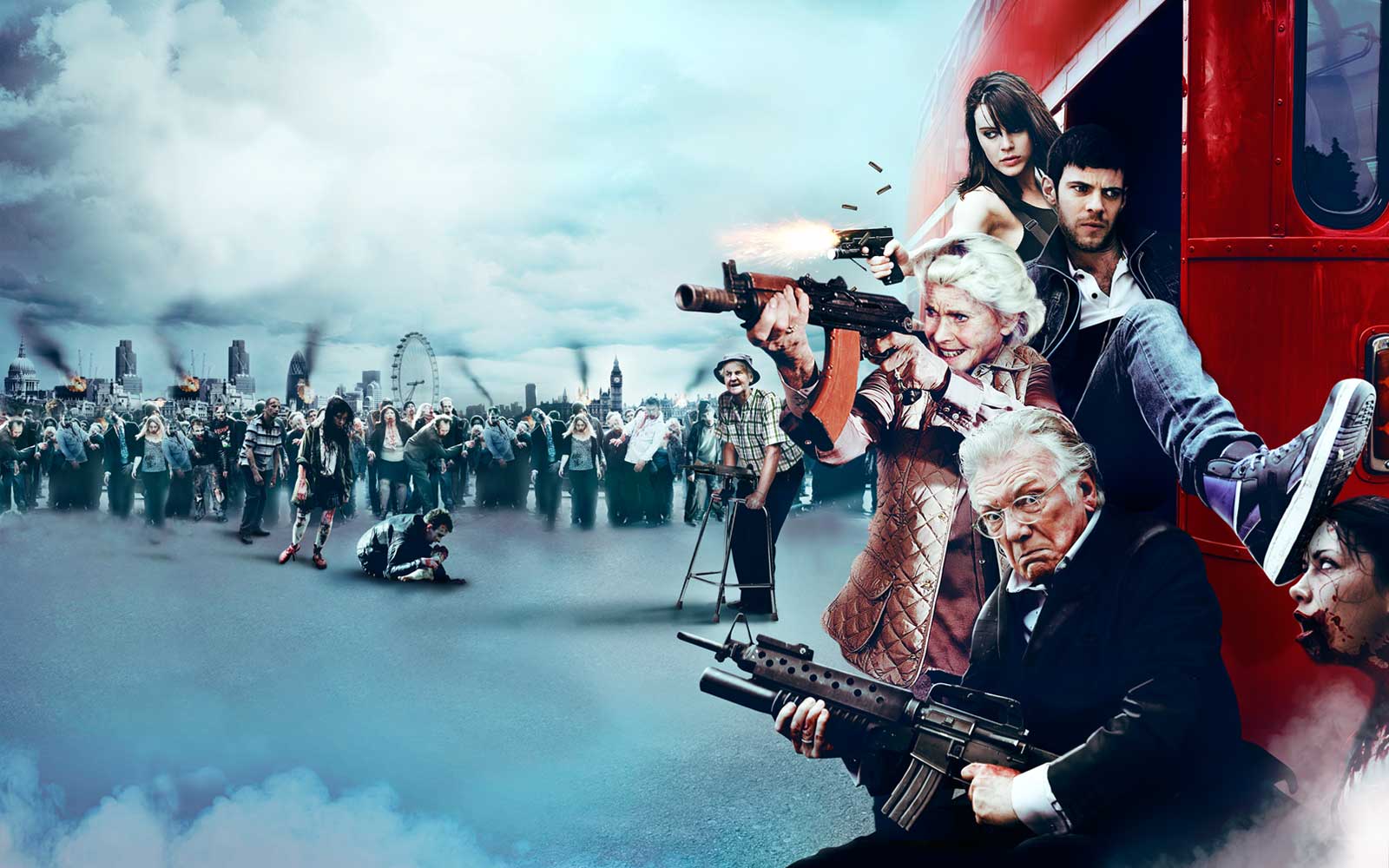How do you cook the perfect steak?
Fillet is the best cut. Trust me. It’s worth the money.
Use molecular gastronomy to take advantage of decades of researching how meat changes with heat. Science indicates that the best cooking temperature is around 55˚C, and definitely not above 60˚C. At a high temperature, myofibrillar (hold 80% of water) and collagen (hold beef together) proteins shrink. Shrinking leads to water loss. In the water lies the flavour.
To cook the fillet use a technique called sous vide. It involves vacuum wrapping the beef and keeping it at 55˚C in a water bath for 24–72 hours. This breaks down the proteins without over heating. The beef becomes tender but retains flavour and juiciness.
Take the beef out. It will look unpalatable. Quickly fry it on high heat on both sides to brown it. The high heat triggers the reduction of proteins or the Maillard reaction. Enjoy with a glass of your favourite red.
Plan to Live
Can planning really sustain us? Should we plan to survive or is project planning simply there to overcome obstacles when we are faced with them? Dr Rebecca Dalli Gonzi writes about a group of project management M.Sc. students who she asked to prepare a project plan. During their project students suddenly faced an unexpected turn of events. They were asked to counteract the problem and face the challenges that they encountered. This is their story
Planning is constant action; it never stops. If you are moving to a new house or country, you probably know what this means. Planning is pervasive, but can it get out of hand? What does planning a gap year mean? Do you plan every single minor detail or do you let loose to enjoy some spontaneity? If, for example, a couple is turning a shell apartment into a home it would involve a lot of tasks, planning leave in advance, and chasing the architect. They just might give up when a book shelf cannot get through the door. If we can plan to live, how would it help us get out of a rut when things really go wrong?
Managing your life is not that different to managing a project. When you manage a project you need a flexible plan that can meet the unplanned changing demands that life hurls at you. We live in a time when the efficiency of a service or project is based upon its ability to meet change or increasing demands. Would a project plan ensure that your plans run smoothly even when your life path starts changing its course?

Project managers cannot always foresee every eventuality when planning and managing a project. Once a project is underway many unexpected events can affect project target dates and resources. Planning at its simplest would mean better management and more knowledge, while at its most complex, it could mean more peace of mind. Trying to plan a complex project without a plan is like trying to cross the Pacific Ocean without a navigation system.
Positioning your project within vulnerable situations during the initial planning stages means your team can generate ideas develop creative solutions, and have a solid idea about the resources they have, time schedules they need to stick to, and budgets. This is exactly what helped Rita Sant manage change during an unexpected turn of events as soon as her project was launched.
Plan for Health
Sant designed a healthcare concept for homebound patients called ‘SMART At HOME’. It offered a combination of home health and community based services. She carried out in-depth research to come up with the right strategy, marketing analysis, project milestones, and deployment plan. Things seemed perfect on paper. Yet she ran into a game changer. Shortly after the project was launched, a competing company called HomesforYou was set up. It threatened to put her project on hold. HomesforYou offered similar concepts that which her project sponsors had in mind. However, Rita and her team had engineered some alternate options before the actual launch to keep the company ahead of the competition. Putting the project in a vulnerable position through an in-depth SWOT analysis (analysis of the strengths, weakness, opportunities, and threats of a project) helped show the project sponsors where their focus should be. Her focus was primarily on selecting target markets and helping attract new customers. Sant was able to direct her team towards the right networks. She identified gaps in the south of Malta, and worked directly with doctors and insurance providers to bring in new customers.

Sometimes, we are so taken up by our projects that we fail to see the obvious, to question the challenges whilst assuming we have already envisaged the end result. Project planning helps identify areas of weakness through tools like PESTEL analysis (analysis of political, economic, social, technological, environmental and legal factors that impact business), SWOT analysis, performance testing to verify strategies (plan workability), design of project think tanks, project recovery planning, contingency planning, and risk analysis (amongst other research areas). There is a lot of research behind project management.
Plan for Energy
Areas in the project that could have been overlooked suddenly become crucial. Sometimes being realistic is crucial to success. Another student, Joseph Borda, immediately received a notice that should his project exceed the proposed budgets the project sponsors would incur heavy fines. Borda was clear with his ideas from the start. Developing the power engineering workforce for the future is what he had in mind. His design of a solar panel array on the Malta International Airport car park would mean the generation of just enough energy to supply the airport. Proper time scheduling ensured that the project would be delivered within the specified time-frames. This could only work together with a proper team organisational structure and pre-designed hierarchical task network, which is the approach to automated planning where dependency among actions is given in the form of a network. A well-researched proposal helped Borda envisage proper scheduling to ensure the project was delivered within the specified time objectives, together with the team organisation structure and task hierarchies required to complete the task in time. Could a project schedule really have helped Borda stick to his time-frames? A project’s life or death hinges on its delivery date. Incurring fines meant that the project was narrowed down to a critical selection of what areas of the project had to be done in time.
“A solar panel array on the Malta International Airport car park would mean the generation of just enough energy to supply the airport”
The schedule alone would not have been a guarantee to a successful outcome. The initial stages of project research helped him and his team realise that the costings report for mounting and installation of the array was heavily over-priced. The project schedule helped mitigate the over-budget fines through the planning of phased installations and so areas that were going to be over-budget were shifted into a secondary phase. Typical project management requires attention to time, cost and quality. Once restrictions appear in one area, other areas begin to shift to accommodate new demands.
Having project management principles in place means there is a greater chance of fulfilling your objectives within the overall strategy and facilitating diagnosis of different situations as they occur. Just like captains need chart plotters or radars for distance and bearing to be able to manoeuvre ships in the worst conditions, so project managers use Gantt charts (a type of bar chart used to illustrate a project’s schedule) to help manoeuvre projects through time. Detailed planning helps translate business objectives into deliverables, provide a list of resource requirements, and a realistic assessment of project time-scales. Control measures can also be used to ensure there are no delays in target dates or to help identify team members who are not being productive.
Plan for Success
Measures of project progress can also be used to indicate when things are not moving as planned. Marc Spiteri decided to incorporate this approach into his project plan to meet a specific target: managing the Malta national rugby union team to qualify for the Rugby World Cup. Spiteri chose sports engineering as his field of study.
Spiteri’s primary objectives were to promote sports locally and to increase Malta’s appeal as a destination for sports tourism. The management plan was designed to operate on a three-point plan: first, having funding mechanisms in place for potential stakeholders and sponsors to bring in further investments; second, training and game planning aimed to work with the national team chosen to aid the organisational requirements for training camps and competitive games; third, a marketing strategy to tap into the local resources.

However, Spiteri was faced with a difficult challenge. Sponsorship for his project plan was threatened to be reduced if specific targets were not reached. Spiteri had knowledge and insight at the planning stage to moderate the negative effects of this cut. During planning he was able to set key performance indicators in areas of finance, training, competition and markets as part of the project design. The performance indicators allowed him to set targets to reach his ambitious goal. Rather than add a measure of control as an after-thought, he was able to integrate this as a whole concept. This meant that significant changes or shortcomings would be assessed against a measurement system, allowing a prompt response to take place with the significant action.
Plan for Death
Project control helps to ‘diagnose’ issues, plan for tackling weaker areas and adjust quickly to changes. It is normal for the team to assume that everything will work out well in the end but unpredictable behaviours, unfortunately, do happen. A lack of ownership can cause as many problems as unscheduled timing of events or project delays. A project plan gives the team the ability to envisage areas in which people conduct their activities and carry out their responsibilities. The more prepared the team is (in terms of knowledge and know-how of project plan), the quicker the recovery period. Planning is also useful as a tool when it is used to focus and highlight project needs to those involved. This is of particular importance when a project manager has to suggest different solutions to his or her client. Johann Farrugia was particularly good at providing a number of solutions for his concept of a digital cemetery when he had a major on-site problem with humidity.
“Information in cemeteries is handwritten meaning that some of the oldest records are today hardly legible. This is why cemeteries need an IT system to meet today’s needs”
Cemeteries are sacred, emotional spaces but also witnesses of human history. Information in cemeteries is handwritten meaning that some of the oldest records are today hardly legible. This is why cemeteries need an IT system to meet today’s needs. Farrugia identified the needs of all the different groups of people who make use of or work at a cemetery and figured out a system that allowed the public to request information easily. Through the website, staff and undertakers could access all the information they needed about gravesite location and burial details.
Farrugia faced problems with the testing system. Extreme humidity was interfering with the IT infrastructure limiting system usage. However, he integrated alternatives as part of his project planning phase thus being able to suggest solutions to his stakeholders and project investors. He was able to locate a secondary location system for supporting the project, thus eliminating completely the location of IT structures on-site. He also factored costings for any added insulation works required to counteract the problem and sought alternative zones that suffered from less humidity within the cemetery.
In this case, since the unexpected problem arose at an early stage, the project manager could be flexible in his planning, allow for change, and bring in alternate ideas to deal with these issues. Having considered the options beforehand meant that he could reduce the impact of a sudden major change.
In some cases, external events can trigger unexpected time delays. At times it can appear impossible to finish a project punctually, especially when there are delays in materials or suppliers. Sometimes a schedule should be consistent with your experience from previous projects. Your main focus should be on getting your critical requirements completed while avoiding distractions. The project management plan is critically dependent on the people who run it, design it, create it, and implement it. Moreover, increases in dependences increase time-frames.
Plan for Sustainability
Time-frames can quickly overrun when introducing sustainable measures into a residential development. Another student, Joslyn Magro, was keen to integrate into her project grey water reservoirs used to hold second class water for domestic use including lavatory use and landscaping photovoltaic panels, double glazing, and landscaping works. Sustainability has been an evolving theme to encourage environmental responsibility and promote intelligent decision- making with respect to energy use. Bad weather delayed the required materials that were being imported and this set the project back by a month.
By using a Gantt chart, Magro saw the negative effects of this delay. It would impact other installations and works. To reduce the burden, she scheduled architectural detailing and structural elements to run in parallel. This would reduce the dependency on strict delivery dates.

In her project plan she had also considered sourcing from different suppliers so she was able to negotiate costs affected by the delays. Once the materials were delivered on site, she could also introduce secondary teams of labourers to make up for the one-month back log. Costings saved during the delay, were used on a double-managed team unit. In her case, this may have proved to be the winning strategy as managing the on-site team as best as possible would help to counteract any further setbacks.
Taking advantage of constraints is the best way in project planning when possible. Projects revolve around expectations so it is better to envisage opportunity rather than to try control an event. Turning a shell apartment into a home might sound like a simple project in comparison to the ones discussed earlier but the problems would, theoretically, be very similar. Delays, supplier changes and exceeded budgets would surely impact your strategy along the way. Having strict milestones might be useful. It is not always necessary to consider worst-case scenarios but do consider carefully how much risk is actually acceptable. Most importantly, do not try to solve the problem, solve the cause.
This article covers some work of the first cohort of students enrolled in the M.Sc. in Project Management launched by the Department of Construction and Property Management, Faculty for the Built Environment, University of Malta. The diversity of projects reflects the range of situations in which project management skills are being applied.
Decoding Language
Maltese needs to be saved from digital extinction. Dr Albert Gatt, Prof. Gordon Pace, and Mike Rosner write about their work making digital tools for Maltese, interpretting legalese, and making a Maltese-speaking robot
In 2011 an IBM computer called Watson made the headlines after it won an American primetime television quiz called Jeopardy. Over three episodes the computer trounced two human contestants and won a million dollars.
Jeopardy taps into general world knowledge, with contestants being presented with ‘answers’ to which they have to find the right questions. For instance, one of the answers, in the category “Dialling for Dialects”, was: While Maltese borrows many words from Italian, it developed from a dialect of this Semitic language. To which Watson correctly replied with: What is Arabic?
Watson is a good example of state of the art technology that can perform intelligent data mining, sifting through huge databases of information to identify relevant nuggets. It manages to do so very efficiently by exploiting a grid architecture, which is a design that allows it to harness the power of several computer processors working in tandem.
“Maltese has been described as a language in danger of ‘digital extinction’”
This ability alone would not have been enough for it to win an American TV show watched by millions. Watson was so appealing because it used English as an American would.
Consider what it takes for a machine to understand the above query about Maltese. The TV presenter’s voice would cause the air to vibrate and hit the machine’s microphones. If Watson were human, the vibrations would jiggle the hairs inside his ear so that the brain would then chop up the component sounds and analyse them into words extremely rapidly. The problem for a computer is that there is more to language than just sounds and words. A human listener would need to do much more. For example, to figure out that ‘it’ in the question probably refers to ‘Maltese’ (rather than, say, ‘Italian’, which is possible though unlikely in this context). They would also need to figure out that ‘borrow’ is being used differently than when one says borrowing one’s sister’s car. After all, Maltese did not borrow words from Italian on a short-term basis. Clearly the correct interpretation of ‘borrow’ depends on the listener having identified the intended meaning of ‘Maltese’, namely, that it is a language. Watson was equipped with Automatic Speech Recognition technology to do exactly that.
To understand language any listener needs to go beyond mere sound. There are meanings and structures throughout all language levels. A human listener needs to go through them all before saying that they understood the message.
Watson was not just good at understanding; he was pretty good at speaking too. His answers were formulated in a crisp male voice that sounded quite natural, an excellent example of Text-to-Speech synthesis technology. In a fully-fledged human or machine communicating system, going from text to speech requires formulating the text of the message. The process could be thought of as the reverse of understanding, involving much the same levels of linguistic processing.
Machine: say ‘hello’ to Human
The above processes are all classified as Human Language Technology, which can be found in many devices. Human Language Technology can be found everywhere from Siri or Google Now in smart phones to a word processing program that can spell, check grammar, or translate.
Human-machine interaction relies on language to become seamless. The challenge for companies and universities is that, unlike artificial languages (such as those used to program computers or those developed by mathematicians), human languages are riddled with ambiguity. Many words and sentences have multiple meanings and the intended sense often depends on context and on our knowledge of the world. A second problem is that we do not all speak the same language.
Breaking through Maltese
Maltese has been described as a language in danger of ‘digital extinction’. This was the conclusion of a report by META-NET, a European consortium of research centres focusing on language technology. The main problem is a lack of Human Language Technology — resources like word processing programs that can correctly recognise Maltese.
Designing an intelligent computer system with a language ability is far easier in some languages than it is in others. English was the main language in which most of these technologies were developed. Since researchers can combine these ready-made software components instead of developing them themselves, it allows them to focus on larger challenges, such as winning a million dollars on a TV program. In the case of smaller languages, like Maltese, the basic building blocks are still being assembled.
Perhaps the most fundamental building block for any language system is linguistic data in a form that can be processed automatically by a machine. In Human Language Technology, the first step is usually to acquire a corpus, a large repository of text or speech, in the form of books, articles, recordings, or anything else that happens to be available in the correct form. Such repositories are exploited using machine-learning techniques, to help systems grasp how the language is typically used. To return to the Jeopardy example, there are now programs that can resolve pronouns such as ‘it’ to identify their antecedents, the element to which they refer. The program should identify that ‘it’ refers to Maltese.
For the Maltese language, researchers have developed a large text/speech repository, electronic lexicons (language’s inventory of its basic units of meaning), and related tools to analyse the language (available for free). Automatic tools exist to annotate this text with basic grammatical and structural information. These tools require a lot of manual work however, once in place, they allow for the development of sophisticated programs. The rest of this article will analyse some of the on-going research using these basic building blocks.
From Legalese to Pets
Many professions benefit from automating tasks using computers. Lawyers and notaries are the next professionals that might benefit from an ongoing project at the University of Malta. These experts draft contracts on a daily basis. For them, machine support is still largely limited to word processing, spell checking, and email services, with no support for a deeper analysis of the contracts they write and the identification of their potential legal consequences, partly through their interaction with other laws.
Contracts suffer from the same challenges when developing Human Language Technology resources. A saving grace is that they are written in ‘legalese’ that lessens some problems. Technology has advanced enough to allow the development of tools that analyse a text to enable extraction of information about the basic elements of contracts, leaving the professional free to analyse the deeper meaning of these contracts.
Deeper analysis is another big challenge in contract analysis. It is not restricted to just identifying the core ‘meaning’ or message, but needs to account the underlying reasoning behind legal norms. Such reasoning is different from traditional logic, since it talks about how things should be as opposed to how they are. Formal logical reasoning has a long history, but researchers are still trying to identify how one can think precisely about norms which affect definitions. Misunderstood definitions can land a person in jail.
Consider the following problem. What if a country legislates that: ‘Every year, every person must hand in Form A on 1st January, and Form B on 2nd January, unless stopped by officials.’ Exactly at midnight between the 1st and 2nd of January the police arrest John for not having handed in Form A. He is kept under arrest until the following day, when his case is heard in court. The prosecuting lawyer argues that John should be found guilty because, by not handing in Form A on 1st January he has violated the law. The defendant’s lawyer argues that, since John was under arrest throughout the 2nd of January he was being stopped by officials from handing in Form B, absolving him of part of his legal obligation. Hence, he is innocent. Who is right? If we were to analyse the text of the law logically, which version should be adopted? The logical reasoning behind legal documents can be complicated, which is precisely why tools are needed to support lawyers and notaries who draft such texts.
Figuring out legal documents might seem very different to what Watson was coping with. But there is an important link: both involve understanding natural language (normal every day language) for something, be it computer, robot, or software, to do something specific. Analysing contracts is different because the knowledge required involves reasoning. So we are trying to wed recent advances in Human Language Technology with advances in formal logical reasoning.
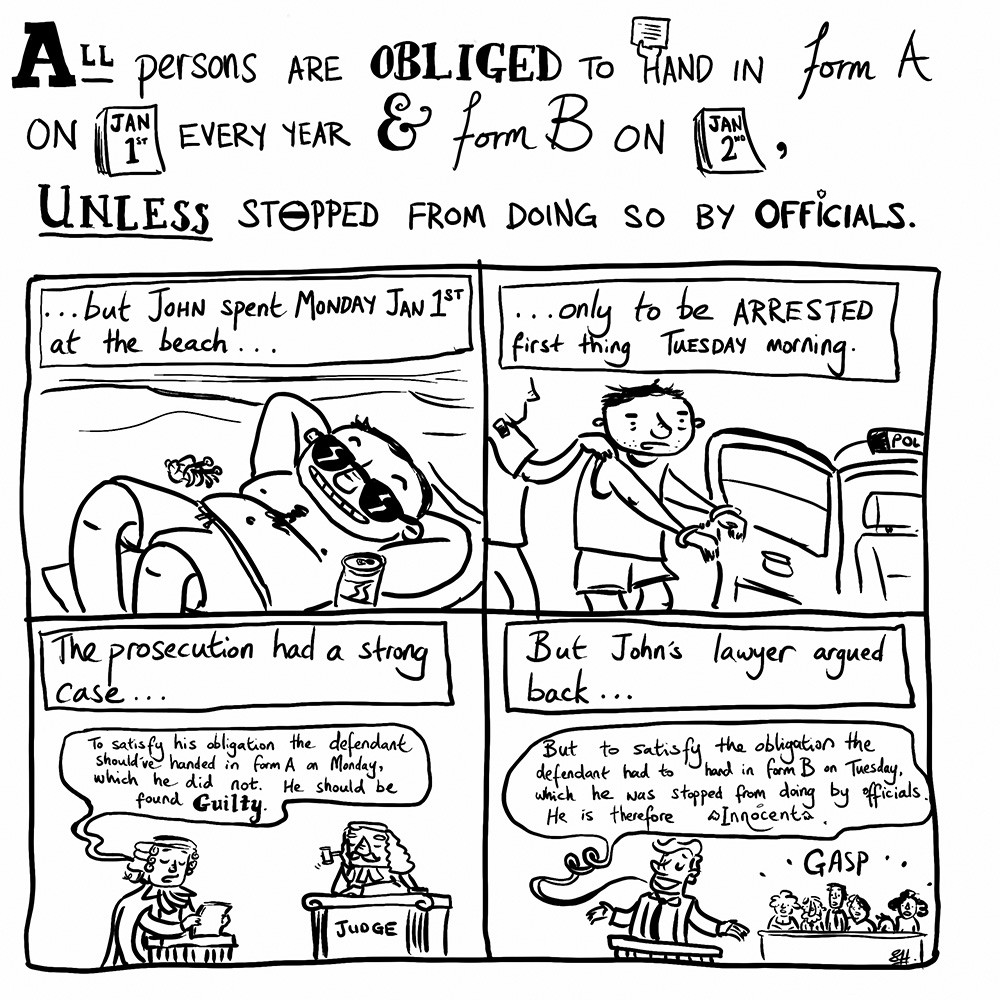
Contract drafting can be supported in many ways, from a simple cross-referencing facility, enabling an author to identify links between a contract and existing laws, to identifying conflicts within the legal text. Since contracts are written in a natural language, linguistic analysis is vital to properly analyse a text. For example in a rent contract when making a clause about keeping dogs there would need to be a cross-reference to legislation about pet ownership.
We (the authors) are developing tools that integrate with word processors to help lawyers or notaries draft contracts. Results are presented as recommendations rather than automated changes, keeping the lawyer or notary in control.
Robots ’R’ Us
So far we have only discussed how language is analysed and produced. Of course, humans are not simply language-producing engines; a large amount of human communication involves body language. We use gestures to enhance communication — for example, to point to things or mime actions as we speak — and facial expressions to show emotions. Watson may be very clever indeed, but is still a disembodied voice. Imagine taking it home to meet the parents.
“Robby the Robot from the 1956 film Forbidden Planet, refused to obey a human’s orders”
Robotics is forging strong links with Human Language Technology. Robots can provide bodies for disembodied sounds allowing them to communicate in a more human-like manner.
Robots have captured the public imagination since the beginning of science fiction. For example, Robby the Robot from the 1956 film Forbidden Planet, refused to obey a human’s orders, a key plot element. He disobeyed because they conflicted with ‘the three laws of robotics’, as laid down by Isaac Asimov in 1942. These imaginary robots look somewhat human-shaped and are not only anthropomorphic, but they think and even make value judgements.
Actual robots tend to be more mundane. Industry uses them to cut costs and improve reliability. For example, the Unimate Puma, which was designed in 1963, is a robotic arm used by General Motors to assemble cars.
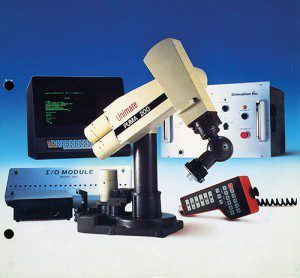
The Puma became popular because of its programmable memory, which allowed quick and cheap reconfiguration to handle different tasks. But the basic design was inflexible to unanticipated changes inevitably ending in failure. Current research is closing the gap between Robby and Puma.
Opinions may be divided on the exact nature of robots, but three main qualities define a robot: one, a physical body; two, capable of complex, autonomous actions; and three, able to communicate. Very roughly, advances in robotics push along these three highly intertwined axes.
At the UoM we are working on research that pushes forward all three, though it might take some time before we construct a Robby 2. We are developing languages for communicating with robots that are natural for humans to use, but are not as complex as natural languages like Maltese. Naturalness is a hard notion to pin down. But we can judge that one thing is more or less natural than another. For example, the language of logic is highly unnatural, while using a restricted form of Maltese would be more natural. It could be restricted in its vocabulary and grammar to make it easier for a robot to handle.
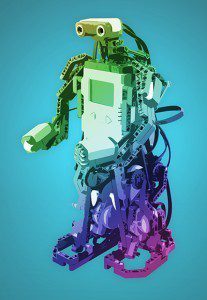 Take the language of a Lego EV3 Mindstorms robot and imagine a three-instruction program. The first would be to start its motors, the second to wait until light intensity drops to a specific amount, the third to stop. The reference to light intensity is not a natural way to communicate information to a robot. When we talk to people we are not expected to understand how the way we put our spoken words relates to their hardware. The program is telling the robot to: move forward until you reach a black line. Unlike the literal translation, this more natural version employs concepts at a much higher level and hence is accessible to anybody with a grasp of English.
Take the language of a Lego EV3 Mindstorms robot and imagine a three-instruction program. The first would be to start its motors, the second to wait until light intensity drops to a specific amount, the third to stop. The reference to light intensity is not a natural way to communicate information to a robot. When we talk to people we are not expected to understand how the way we put our spoken words relates to their hardware. The program is telling the robot to: move forward until you reach a black line. Unlike the literal translation, this more natural version employs concepts at a much higher level and hence is accessible to anybody with a grasp of English.
The first step is to develop programs that translate commands spoken by people into underlying machine instructions understood by robots. These commands will typically describe complex physical actions that are carried out in physical space. Robots need to be equipped with the linguistic abilities necessary to understand these commands, so that we can tell a robot something like ‘when you reach the door near the table go through it’.
To develop a robot that can understand this command a team with a diverse skillset is needed. Language, translation, the robot’s design and movement, ability to move and AI (Artificial Intelligence) all need to work together. The robot must turn language into action. It must know that it needs to go through the door, not through the table, and that it should first perceive the door and then move through it. A problem arises if the door is closed so the robot must know what a door is used for, how to open and close it, and what the consequences are. For this it needs reasoning ability and the necessary physical coordination. Opening a door might seem simple, but it involves complex hand movements and just the right grip. Robots need to achieve complex behaviours and movements to operate in the real world.
The point is that a robot that can understand these commands is very different to the Puma. To build it we must first solve the problem of understanding the part of natural language dealing with spatially located tasks. In so doing the robot becomes a little bit more human.
A longer-term aim is to engage the robot in two-way conversation and have it report on its observations — as Princess Leia did with RT-D2 in Star Wars, if RT-D2 could speak.

Language for the World
Human Language Technologies are already changing the world. From automated announcements at airports, to smartphones that can speak back to us, to automatic translation on demand. Human Language Technologies help humans interact with machines and with each other. But the revolution has only just begun. We are beginning to see programs that link language with reasoning, and as robots become mentally and physically more adept the need to talk with them as partners will become ever more urgent. There are still a lot of hurdles to overcome.
To make the right advances, language experts will need to work with engineers and ICT experts. Then having won another million bucks on a TV show, a future Watson will get up, shake the host’s hand, and maybe give a cheeky wink to the camera.
Will robots take over the world?
Unlikely, for the next 100 years. Academics and sci-fi writers take three rough approaches. We will become one with the bots by integrating computers into our body achieving the next stage of evolution. Or, robots will become so powerful so quickly that we’ll become their slaves, helpless to stop them — think the Matrix. Or, robots have certain technological hurdles that will take ages to overcome.
Let’s analyse those hurdles. Computing power: no problem. Manufacturing expense: no problem. Artificial intelligence: could take decades, but we are already mapping and replicating the human brain through computers. Energy: very difficult to power such energy-hungry devices in a mobile way; battery or portable energy generation has a long way to go. The desire to enslave humanity: would require Asmiov’s trick or a mad computer scientist to programme it into the bot’s code. Conclusion: unlikely, sleep easy tonight.
Europe, Culture and the Southern Mediterranean
Dr Karsten Xuereb tells us about the role of culture in the Arab world
Cybersexuality
Relationships have changed hand in hand with society. More couples are living far apart from each other. Marc Buhagiar speaks to Mary Ann Borg Cunen to explore how technology can lend a hand. Illustrations by Sonya Hallett.
Cockneys vs Zombies — Film Review

At a site in East London, two construction workers inadvertently unearth the tomb belonging to the late King Charles II. Upon entering the crypt, they are assaulted, bitten and unkilled by former plague victims. Meanwhile, brothers Terry (Rasmus Hardiker) and Andy (Harry Tread- away), with their cousin Katy (Mi- chelle Ryan), are planning a bank heist. The trio concoct this heinousness with a noble intent: saving their grandad’s (Alan Ford) retirement home from be- ing demolished by heartless property developers. But of course, everything goes pear-shaped when the entire neighbourhood is invaded by hordes of the undead.
Cockneys and zombies: that’s what the title promises and that’s exactly what it delivers. Given the self-conscious- ly schlocky title, you would expect a crudely-made, amateurish production,
the likes of which litter the internet. The truth is, thankfully, very different. Cockneys has quite a high production value. It’s not World War Z but footage of London enfolded in chaos and may- hem is rendered in good quality CG, as are the close-up shots of carnage.
Still, one problem with comedy zombie flicks is that they will forever be in the shadow of Edgar Wright’s masterful Shaun of the Dead (2004). Shaun was a perfect storm of comedy, horror, excellent production, inspired casting, and fortuitous timing. Just as everybody was trying to get his/her head around the seemingly dubious merits and immense popularity of tor- ture porn horror films (Saw and The Passion of the Christ were both released in 2004), in waltzed Messrs. Wright, (Simon) Pegg and (Nick) Frost who made everybody’s sides split with laughter.
Luckily, even though Cockneys vs Zombies is nowhere near as brilliant as Shaun, it still can hold its head high. Director Matthias Hoene and writers James Moran (Severance, 2005) and Lucas Roche touch upon, but don’t expand much, on the zombie-as-meta- phor angle. They just want to play it for laughs and get more hits than misses. The scene in which poor old Hamish (Richard Briers) is being chased by the notoriously slow-moving zombies is pure gold and West Ham United sup- porters can put their mind at rest that, even after death, the feud with Millwall still rages on. In an inspired scene, we are at last shown that even infants are not immune to a zombie infestation.
Cockneys is no (early) George A. Romero and does not aspire to be. It just wants you to relax, pop some corn, sip on soda, and enjoy a zombie-tour around the streets of East London.
Future-Safe Malta
Words by Prof. Saviour Formosa
“Extreme weather leaves Mediterranean countries picking up the pieces. Egypt and Lebanon were the hardest hit with over 1.2 million people displaced overnight. Malta didn’t fare much better. The authorities have reported over 2,300 dead or missing, thousand injured and 74,000 persons displaced. Power cuts have been reported all over the island after Turbine Two tripped at the Delimara Power Station. Enemalta have not replied. The islands have taken a major blow to their infrastructure. Debris has been reported 1 km away from the coasts. The AFM and emergency responses were immediately dispatched and are starting to clear arterial roads. Insurance companies are still counting the costs. Valletta, Floriana and parts of Isla were protected from the storm surge by centuries-old Knight’s fortifications. The following localities have been affected: Birgu, Bormia, Kalkara, Marsa, Gzira, Msida, Pietà, San Giljan, Sliema, Ta’Xbiex, Xghajra, Birzebbuga, Marsascala, Marsaxlokk, Xlendi and Marsalforn. “
The above cutout could become reality if a Category 3 storm lashes Malta with 178 to 208 km per hour winds. The chances are minimal but too probable to ignore, since in 1995 a similar storm formed close to the Maltese Islands followed by others in 1996, 2006, and 2011. Below are two scenarios that compare Malta as it currently stands against an island with a solid disaster management plan.
[ SCENARIO 1 – AN UNPREPARED ISLAND]
The emergency forces have been inundated with calls for help and have few plans to operate a workable rescue effort. Key personnel were lost at home or while rushing to the scene, since the infrastructure has been knocked out, paralysing the island. Power surges or power cuts have caused fires all over the Islands creating an apocalyptic scenario. With the storm still raging, the lack of a back-end ICT network has rendered communication near impossible.
[ SCENARIO 2 – THE IDEAL SCENARIO]

